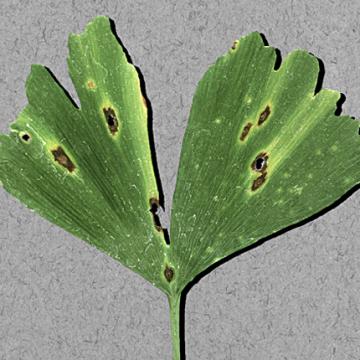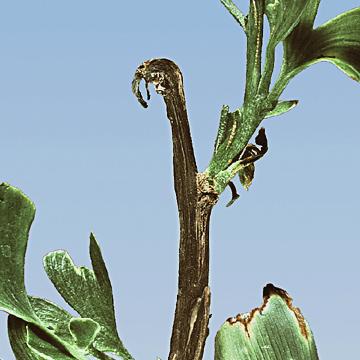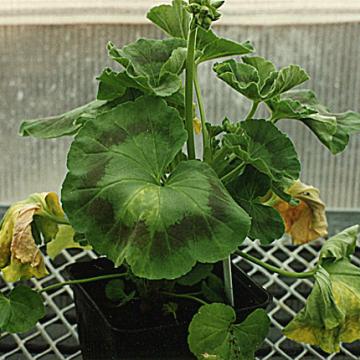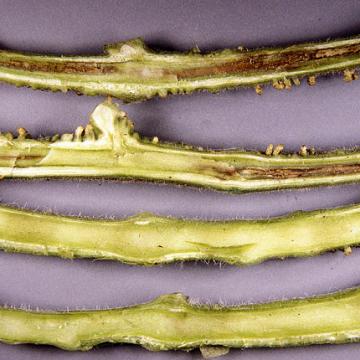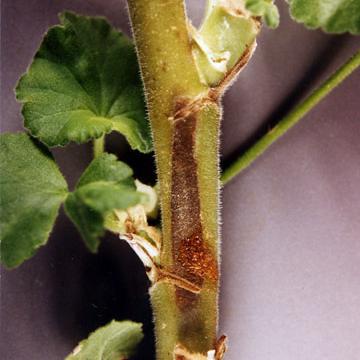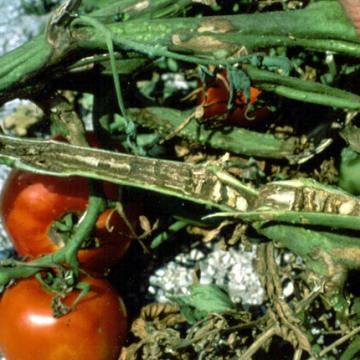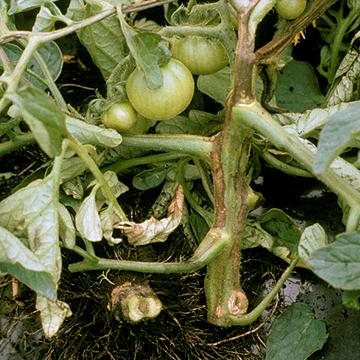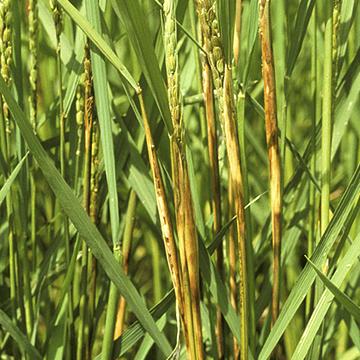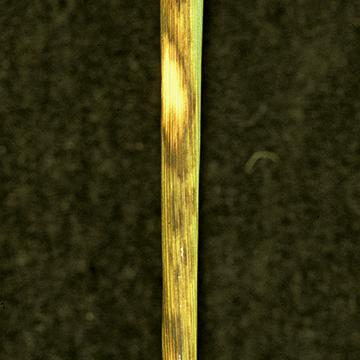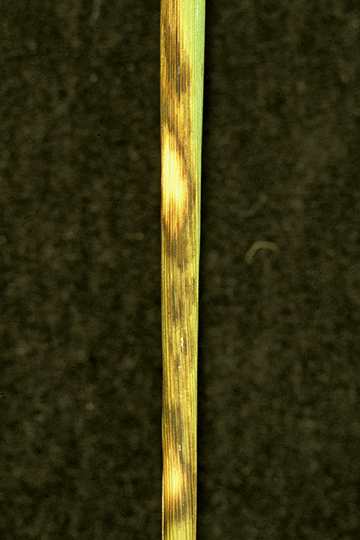DISEASE: Bacterial leaf spot (Canker)
HOST: Ginkgo
Ginkgo leaf with dark brown, elongated necrotic spots.
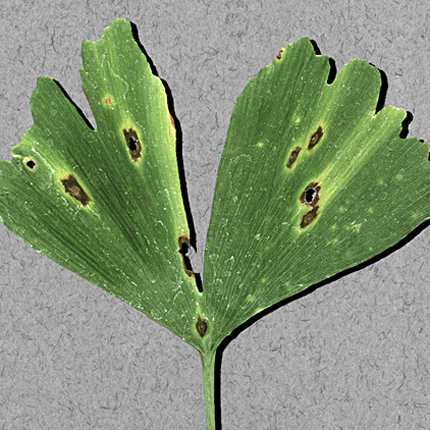
Bacterial leaf spot (Canker) | Ginkgo
DISEASE: Bacterial leaf spot (Canker)
HOST: Ginkgo (Ginkgo biloba)
PATHOGEN: Pseudomonas syringae pv. syringae
SOURCE: A. Bishop
DISEASE: Bacterial leaf spot (Canker)
HOST: Ginkgo
Ginkgo with leaf spots and canker on stem.
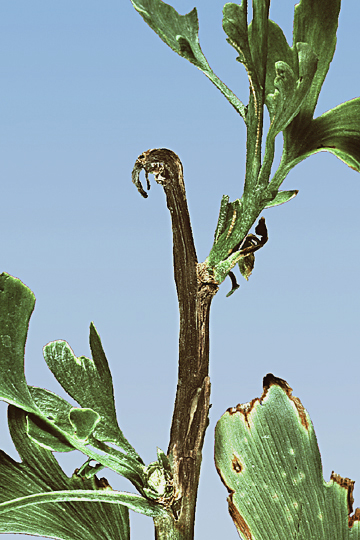
Bacterial leaf spot (Canker) | Ginkgo
DISEASE: Bacterial leaf spot (Canker)
HOST: Ginkgo (Ginkgo biloba)
PATHOGEN: Pseudomonas syringae pv. syringae
SOURCE: A. Bishop
DISEASE: Pith necrosis
HOST: Geranium
Geranium with wilted, yellow necrotic leaves.
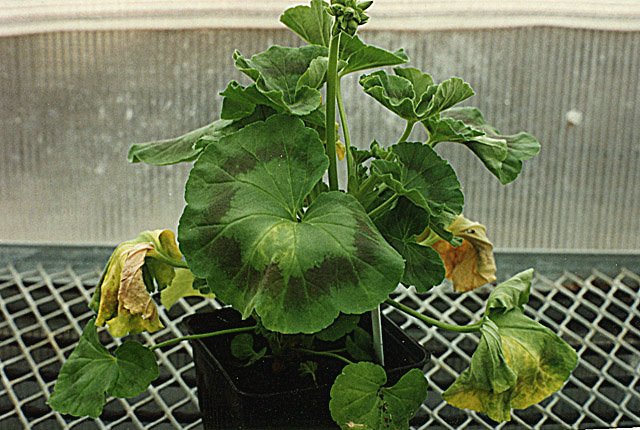
Pith necrosis | Geranium
DISEASE: Pith necrosis
HOST: Geranium (Pelargonium sp.)
PATHOGEN: Pseudomonas corrugata
SOURCE: A. Magyarosy, D. Thomas
DISEASE: Pith necrosis
HOST: Geranium
Pitted and hollow stems, one of the disease symptoms.
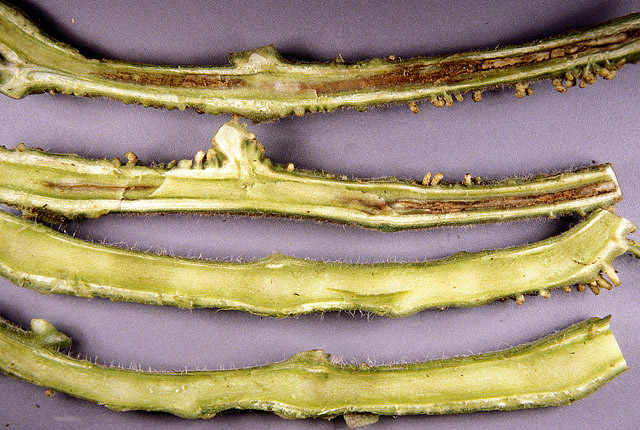
Pith necrosis | Geranium
DISEASE: Pith necrosis
HOST: Geranium (Pelargonium sp.)
PATHOGEN: Pseudomonas corrugata
SOURCE: A. Magyarosy, D. Thomas
DISEASE: Pith necrosis
HOST: Geranium
Discolored stem caused by systemic infection of the pathogen.
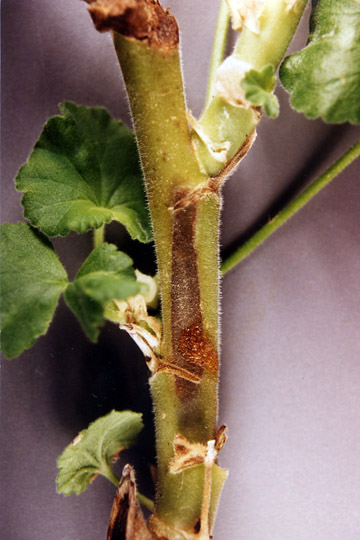
Pith necrosis | Geranium
DISEASE: Pith necrosis
HOST: Geranium (Pelargonium sp.)
PATHOGEN: Pseudomonas corrugata
SOURCE: A. Magyarosy, D. Thomas
DISEASE: Pith necrosis
HOST: Tomato
Cracked, dry, hollow stems with internal necrosis.
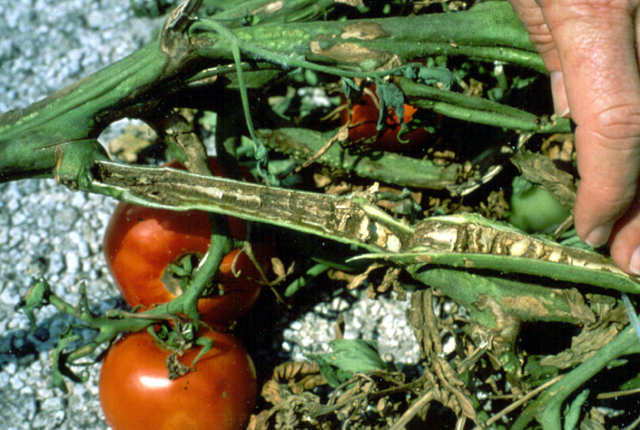
Pith necrosis | Tomato
DISEASE: Pith necrosis
HOST: Tomato (Lycopersicon esculentum)
PATHOGEN: Pseudomonas corrugata
SOURCE: A. Alvarez
DISEASE: Pith necrosis
HOST: Tomato
External necrotic stem tissues. Initial symptoms include chlorosis of young leaves. Wilting may occur when disease is severe.
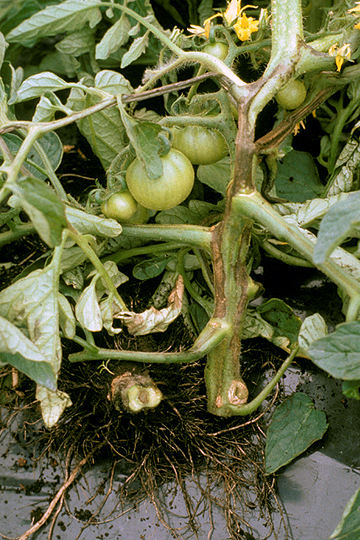
Pith necrosis | Tomato
DISEASE: Pith necrosis
HOST: Tomato (Lycopersicon esculentum)
PATHOGEN: Pseudomonas corrugata
SOURCE: K. Natsuaki, M. Goto
DISEASE: Sheath brown rot
HOST: Rice
Disease symptoms typically occur on flag leaf sheaths from booting to heading stage and also on panicles. Water-soaked lesions on glumes turn light brown.
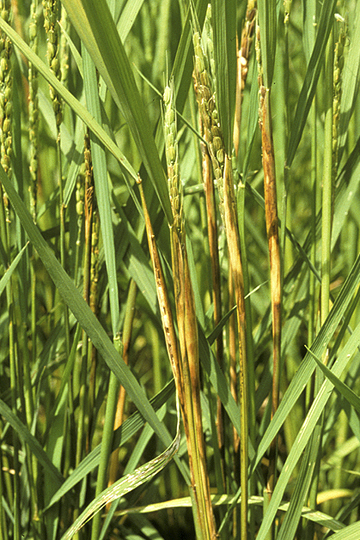
Sheath brown rot | Rice
DISEASE: Sheath brown rot
HOST: Rice (Oryza sativa)
PATHOGEN: Burkholderia fuscovaginae
PATHOGEN SYNONYM: Pseudomonas fuscovaginae
SOURCE: K. Miyajima, M. Goto


